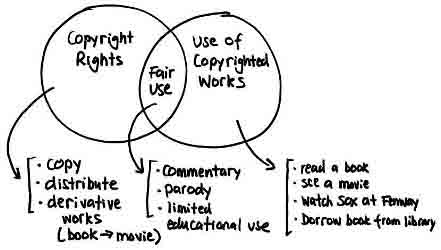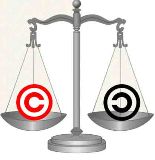Almost every company has some of these:
- brochure
- catalogue
- prospectus
- product or service listings (like a menu card)
- a book or booklet about the company or its products and services

While some of these may be really simple documents that carry only the name and price – and sometimes a bare minimum description, many companies take special effort in developing their brochures, catalogues or product listings. They include great images, taken and processed by professional photographers. There may be designs, diagrams, artistic effort or creative text which makes the brochure (or prospectus or whatever else you call it) stand out in the crowd. In that case, it is a valuable asset for the company, and it is copyrightable. Which means no one else but the legitimate owner of the material can copy or commercially exploit the material.
What is to be done, if the competitors start copying these brochures and catalogues? What if your clients get confused because your competitors copied product descriptions verbatim from your catalogue? What if they start using the same images that you have used on your material?
Of course you can sue them from copyright infringement – that’s a no brainer, isn’t it? Not necessarily. While you definitely have a recourse in law, and a right to prevent such copying – through both civil (filing a suit in the court for damages) and criminal proceedings (file FIR, Copyright Act provides for an offence of infringement), you need to be able to establish that you are owner of the copyright and is justified in enforcing the copyright. There are few pre-requisites that you need to conform to, and steps that you need to take in order to ensure enforceability of copyright.
To know more about how to approach Copyright clients please visit
Presuming that the owner of the copyright is going to be an incorporated entity (Company or Limited Liability Partnership), the following steps need to be taken.
-
-
Copyright Assignment Agreement:
Since company gets its work done through individuals or other entities, the company must get such persons to sigh a copyright waiver and assignment agreement which will transfer the copyright to the company. If instead of assignment there is a license agreement, and if such license is not exclusive in nature, then other people and entities can use the same content as you are using. If there would be not agreement, the presumption is that the creator of the copyright will retain copyright, even if the company uses the same and price is paid. However, if an employee creates copyrighted material in course of normal duty, it may belong to the company in absence of express agreement. However, the best is to have an agreement signed. If an employee is going to create a lot of copyrighted material in course of his work regularly, then the employment agreement should mention that intellectual property created by him will automatically be vested in the company, and she may be asked to sign a general assignment form with respect to all copyrightable material to be created.
-
Express copyright reservation on the catalogue:
This is a common mistake a lot of people make. The claim of copyright and reservation of the same on face of the material is needed. It is not just a warning to your competitors that the material is not to be copyrighted, it is also an indication that you intend to protect the material from being copied. If someone still copies despite an warning, that makes the criminal intention of the perpetrator very obvious with respect to the offence of infringement as described in Copyright Act.
-
Registration of Copyright:
While it is not necessary to register copyright in order to be able to claim the same, certificate of registration of copyright and the entries made in the Register of Copyrights serve as prima facie evidence in a court of law with reference to dispute relating to ownership of copyright. Registration of Copyright makes it easier to enforce copyright – it can be very difficult at times to enforce an unregistered copyright. The fee for registration is merely Rs. 50 in India per work except for Cinematograph Film, which costs Rs. 600 to register.
-
“Registrar of Copyrights is located in Delhi. The address is: 4th Floor, Jeevan Deep Building, Parliament Street, New Delhi- 110 001. The applications for registration of works can be filled at the counter provided at the Copyright Office from 2.30 P.M. to 4.30. P.M. from Monday to Friday or can be sent by post. On-line registration has been possible since 2009, although at the moment the e-filing window is down for maintenance (hopefully it will be back soon).”
-
Registering under the Press and Registration of Books Act, 1867:
A catalogue is registrable under Section 18(14) of the Press and Registration of Books Act, 1867, and a declaration with respect to copyright is needed to be made at this stage. There are instances where copyright infringement suits were dismissed as this statutory requirement is not fulfilled (Lamba Brothers Pvt. Ltd. v. Lamba Brothers, Rupendra Kashyap vs. Jiwan Publishing House). Also, this statute requires that every book (the statutory definition of book is wide enough to cover a Catalogue) or paper printed within India shall have printed legibly on it the name of the printer and the place of printing, and the name of the publisher, and the place of publication.
Also, any such catalogue printed in India is required to be delivered by the printer to an officer appointed under this Act within a month of printing.
On delivery, the officer will register a memorandum of every book recording the following particulars:-
- The title of the book and the contents of the title-page, with a translation into English of such title and contents, when the same are not in the English language;
- The language in which the book is written;
- The name of the author, translator, or editor of the book of any part thereof;
- The subject;
- The place of printing and the place of publication;
- The name of firm of the printer and the name of firm of the publisher;
- The date of issue from the press or of the publication;
- The number of sheets, leaves or pages;
- The size;
- The first, second or other number of the edition;
- The number of copies of which the edition consists;
- Whether the book is printed 3[cyclostyled or lithographed];
- The price at which the book is sold to the public; and
- The name and residence of the proprietor of the copyright or of any portion of such copyright.
Although the fine for not complying to this particular provision is merely Rs. 50, if the courts start refusing copyright enforcement due to non-compliance with this statute (which seems to be unreasonable to me), it will become quite necessary to comply with it for a lot of people.
Registration Procedure
To register a book under this act, look up the Examiner of Books. If you can’t locate him, just call up the newspaper registration officer – he will have some idea. In Mumbai, the Examiner of Books sits in the Old Customs House in Fort area.











Want to know the cost to register our company, logo n product name
Have to register my company name, logo n product name
good one………..
thanks yogesh
Nice article Ramanuj